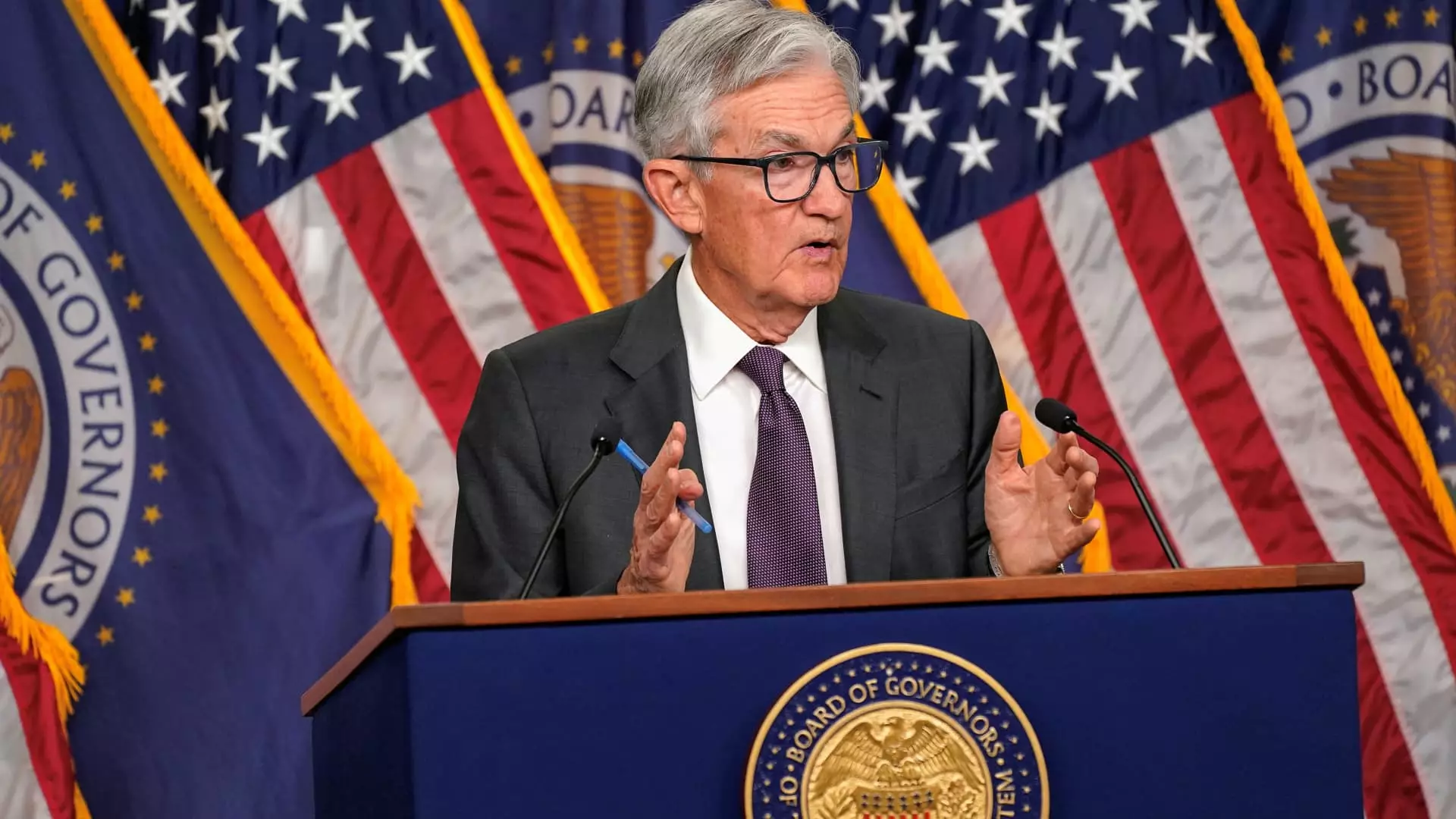In a landscape where economic predictions often feel like futile exercises in wishful thinking, the Federal Reserve recently made a critical decision that has sent ripples of concern across markets. By maintaining the benchmark interest rates between 4.25% and 4.5%, the Fed has exhibited a cautious optimism tempered by undeniable uncertainties regarding the economic climate. While this decision aligns with market expectations—the probability of any rate adjustment at their meeting had been virtually zero—it also nudges us closer to a potential downturn that many observers are wary of.
The Fed is juggling several factors: the ambiguous impact of tariffs imposed by the Trump administration, intriguing moves in fiscal policy that include tax cuts and deregulation, and evidence of a decelerating economy. This cocktail of conditions clearly indicates that while the Fed is holding its ground for now, it is only a heartbeat away from action—raising fundamental questions about the strength and stability of our current economic trajectory.
A Bleak Outlook for Growth and Inflation
In a disconcerting development, the Federal Reserve has lowered its growth projections to a mere 1.7% for this year, a full 0.4% down from its previously reported figures. At the same time, inflation estimates have surged, now sitting at a projected 2.8%—a worrisome reminder that the costs of living are rising faster than the Fed’s preferred target. The Fed’s collective outlook now reflects a cautious stance that suggests an economy struggling to find its footing amidst growing threats.
This disjunction between growth and inflation is particularly troubling. As consumer spending shows signs of moderation, driven down by uncertainties that loom over tariffs and broader economic conditions, it raises the possibility that we are teetering on the edge of stagnation. A very real challenge for policymakers is striking a delicate balance between controlling inflation and fostering economic growth. The Fed’s latest assessments have pushed the “dot plot” of officials’ rate expectations to take on a hawkish tone, indicating a growing wariness that could upend plans that depend on continued fiscal easing.
The Tariff Dilemma: An Economic Nightmare?
The looming questions around tariffs imposed by the Trump administration send chills down the spines of economists and consumers alike. In recent months, steel and aluminum tariffs, along with potential new duties on a slew of other goods, have raised inflation expectations while Jenga-like suspicions of market stability become a rapidly deconstructing tower. The threat of escalating tariffs has not only rattled financial markets but has also steeped consumer confidence in uncertainty.
Though Bank of America’s CEO Brian Moynihan attempted to showcase resilience by touting solid consumer spending—a glimmer of optimism in an otherwise stormy forecast—this façade of stability may be deceptive. Cracks are emerging in the labor market with increasing unemployment figures, proving that beneath the surface, the foundational economy is more fragile than it appears. When inflation outpaces wage growth, the notion of consumer resilience quickly dissipates, exposing the vulnerability of our economic stability.
The Fed’s Dual Mandate: Balancing Growth with Responsibility
The Federal Reserve holds the dual mandate of ensuring maximum employment while maintaining price stability. The current economic climate raises questions of whether these two objectives can realistically coexist under increasing uncertainty. While Fed Chair Jerome Powell suggests readiness to combat inflation by maintaining elevated interest rates, it opens up a Pandora’s box of complications.
Economic reality is murky—if employment begins to falter, the Fed may find it necessary to ease policies, further compounding the inflation challenge. As Powell pointed out, the prospects for the labor market are suspiciously volatile, which could lead to a reactive response from the Fed. Their decisions are now shrouded in a haze of ambiguity, placing intense pressure on both policymakers and corporations striving to navigate this labyrinthine economic landscape.
The Investor’s Reaction: Cautious Optimism or Just Delusion?
Following the Fed’s disclosure, markets reacted positively, with the Dow Jones Industrial Average surging over 400 points. Yet, such enthusiasm could be just a reflection of deluded optimism rather than a rational appraisal of economic conditions. Investors tend to latch onto whatever bits of news they can find to justify their investments, overlooking the pervasive shadows of uncertainty that loom over the landscape.
Amidst the chaotic pulse of Wall Street, it remains essential to dig deeper and question whether such a pronounced market rally can be sustained. The disconnect between investor sentiment and the economic reality may ultimately expose a dangerous vulnerability—a ticking time bomb waiting for an unexpected detonation. As the winds of uncertainty blow across the economic realm, a critical eye must remain vigilant, questioning whether apparent stability is merely smoke and mirrors. The power dynamics shaping our economic future remain fraught, begging for critical scrutiny rather than blind acceptance.

